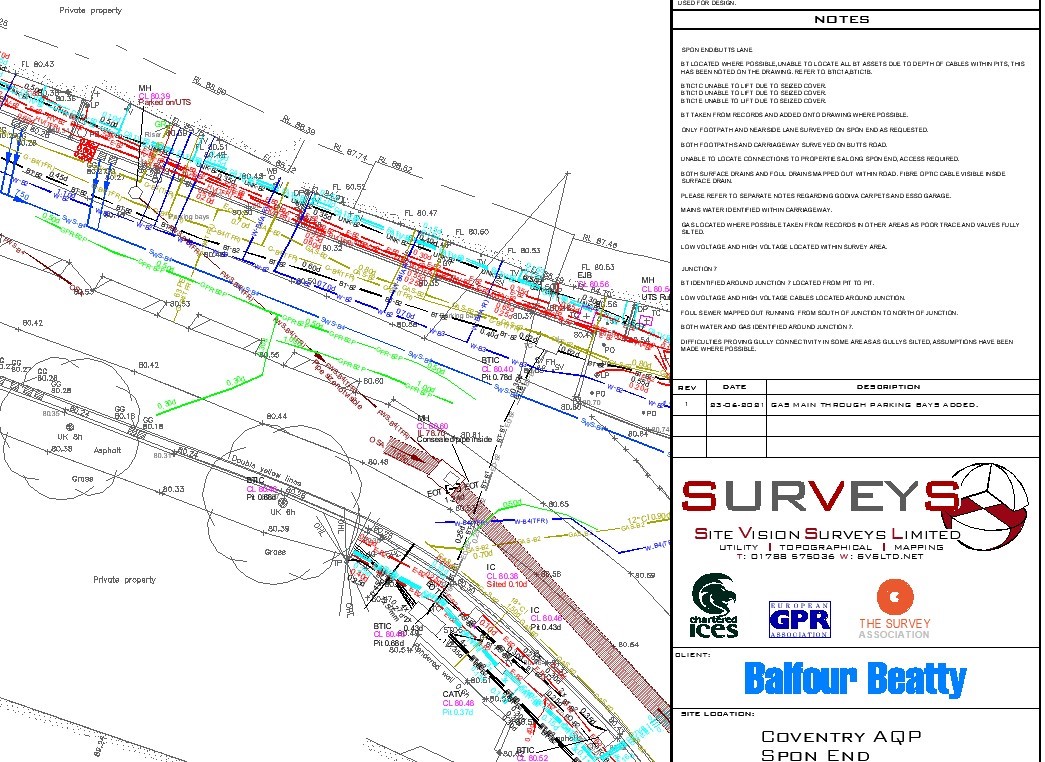STREAM UP
After a brief tendering period and having worked on numerous large scale civils projects with Balfour Beatty, SVS Ltd and SVS Civils LLP were delighted to be awarded this project.
We knew the demands of this project would provide us with the opportunity to demonstrate the full breadth of our capability and as an Air Quality Project (AQP), creating new cycle routes whilst improving traffic flows through the city, we all had a vested interest in the final outcome
Initial discussions, teams meetings and eventually, site walk overs provided us with a unique perspective of the complexities of the project and how we might approach the works to draw the best data possible in a safe and timely fashion. It was apparent from the beginning that a full suite of our services, devices and techniques would be called upon throughout the duration of the works.
Continuous investment in both technology and training has given us the ability to deploy a wide range of devices and techniques that can maximise the data yield being drawn from a site each and every visit.
Particular attention has been given to the ability to gather and store site data in a way that limits the impact our survey activities has on a site and those who work on it, live in it or travel through it
SVS Ltd achieves this through deploying a variety of remote and mobile data capture units
PROJECT
This was the first project to have the “Stream Up” mobile ground probing radar system (MGPR) deployed on it. This device enabled us to gather good, clean data from across all carriageway areas at a variety of speeds, throughout the day and night, and more importantly, without the need to employ disruptive traffic management schemes
We appreciate this doesn’t remove the need for traffic management all together, it is a non-intrusive methodology after all, but any reduction in TM offers great benefit to both road users and budget alike.
Further works would also be undertaken that would need a presence within the carriageways in order to access IC / MH covers and continue the detection and mapping process throughout the designated survey area

“This proved to be an excellent demonstration of what SVS Ltd and SVS Civils is about, the array of devices we are able to deploy, the knowledge and experience of our surveyors and our ability to problem solve throughout the life cycle of the project proved invaluable in achieving final deliverable on time and on budget”
Simon Bailey FCInstCES
Managing Director
Project Management
The project would also require us to establish the condition and route of the drainage networks, with particular interest in where the highways drainage was flowing too. The hydrology engineers wanting the information to address a concern they had with their flood prevention model. It was also of interest to Severn Trent to establish the number of connections from gully pots, kerb outlets and the likes that dropped into their foul water network, as they too were experiencing flooding issues often following poor weather events
This requirement called upon our SVS Civils team whose expertise in drainage, person entry and camera inspection works would be fully utilised
Covering targeted areas, running along water courses and with some tunnel entrance works the drainage inspection teams provided a wealth of size, material, positional and conditional data supported by our land survey teams who were instructed to accurately map all the established drainage infrastructure and related street furniture along with the topography of the surround land
Another arm of the SVS Civils team provides safe digging services either through physical hand digging or, on this occasion, through deploying a Vac Ex system.
A major benefit of the Pas128 approach is the confidence rating mechanism.
Where the position and depth of a “service of interest” is paramount this mechanism provides the tools
The Vac Ex, using high pressured air, removes the surrounding materials in a safe and non-damaging way, storing the material in a hob and leaving the working environment clear of debris
